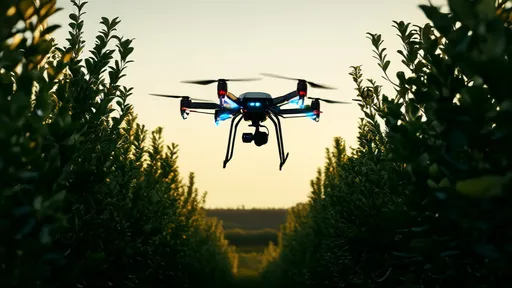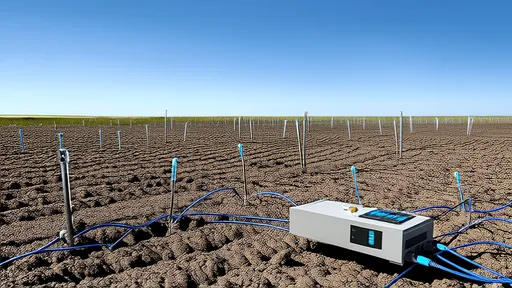The intersection of mathematics and epidemiology has given rise to powerful tools for understanding disease spread in our hyperconnected world. Among these, topological models of social network transmission represent some of the most sophisticated approaches to predicting and managing outbreaks. These models don't just count cases—they map the very architecture of human interaction.
Social networks as disease highways have become increasingly visible through both digital tracing and advanced mathematical modeling. Where traditional epidemiological models treated populations as homogeneous masses, topological approaches recognize that each individual exists within a unique web of connections. Some nodes in this web act as super-spreaders, while others serve as dead-ends for transmission.
The mathematics behind these models draws from graph theory, where individuals become vertices and their interactions form edges. Early pioneers like Pastor-Satorras and Vespignani demonstrated how network structure could fundamentally alter epidemic thresholds. Their work showed that in scale-free networks—where some individuals have vastly more connections than others—the traditional concept of an epidemic threshold might not exist at all.
Real-world applications of these models have transformed public health strategies. During the COVID-19 pandemic, network models helped identify likely superspreading scenarios before they occurred. Bars, churches, and choir practices emerged as high-risk environments not just because of their enclosed spaces, but due to their distinctive interaction patterns that mathematical models could capture.
One fascinating insight from topological epidemiology is the paradox of protection. Intuitively, one might think vaccinating the most connected individuals would always be optimal. However, models reveal situations where protecting moderately connected individuals actually provides better herd immunity. This counterintuitive finding stems from how diseases can "burn out" when they reach individuals with just the right number of connections.
The temporal dimension adds another layer of complexity to these models. Human networks aren't static—they pulse with daily routines, seasonal changes, and life events. Modern topological epidemiology incorporates time-varying networks where connections form and dissolve according to predictable patterns. A morning subway ride creates different transmission potential than an evening dinner party, even among the same individuals.
Digital contact tracing efforts during recent pandemics have provided unprecedented data to feed these models. While privacy concerns remain, the mathematical insights gained from millions of anonymized interactions have refined our understanding of network transmission. Interestingly, these digital traces often confirm what mathematical models had predicted decades earlier about the structure of human networks.
Challenges persist in applying these elegant mathematical frameworks to messy reality. Network models require data about who interacts with whom—information that's often incomplete or biased. Researchers have developed creative solutions, using proxy measures like mobile phone data, financial transactions, and even social media activity to approximate interaction networks when direct observation isn't possible.
The future of topological epidemiology likely involves multilayer networks that capture different types of interactions simultaneously. A person might have physical contacts at work, digital contacts through social media, and occasional contacts during travel—each layer with its own transmission dynamics. The mathematics to handle these complex, interacting networks is still being developed at the frontiers of network science.
As the field progresses, it's becoming clear that topological models offer more than just predictions—they provide a new language for understanding disease spread. Concepts like "betweenness centrality" and "local clustering coefficients" have moved from obscure mathematical terms to essential tools for public health planning. This linguistic shift reflects how deeply network thinking has penetrated modern epidemiology.
The implications extend beyond infectious diseases. The same models that track viruses can follow the spread of information, behaviors, or even emotional states through populations. This universality suggests topological epidemiology may represent not just a specialized tool, but a fundamental framework for understanding all sorts of population-level phenomena in our interconnected age.
Ultimately, the power of these mathematical approaches lies in their ability to reveal hidden patterns in what appears to be chaos. By mapping the invisible architecture of human contact, topological models give public health officials a fighting chance to stay ahead of pathogens in our complex, ever-changing social landscapes. As both our mathematical tools and data sources improve, this approach will likely become even more central to global health strategies.

By /Jul 18, 2025

By /Jul 18, 2025

By /Jul 18, 2025

By /Jul 18, 2025

By /Jul 18, 2025

By /Jul 18, 2025

By /Jul 18, 2025

By /Jul 18, 2025

By /Jul 18, 2025

By /Jul 18, 2025

By /Jul 18, 2025

By /Jul 18, 2025

By /Jul 18, 2025

By /Jul 18, 2025

By /Jul 18, 2025

By /Jul 18, 2025

By /Jul 18, 2025

By /Jul 18, 2025